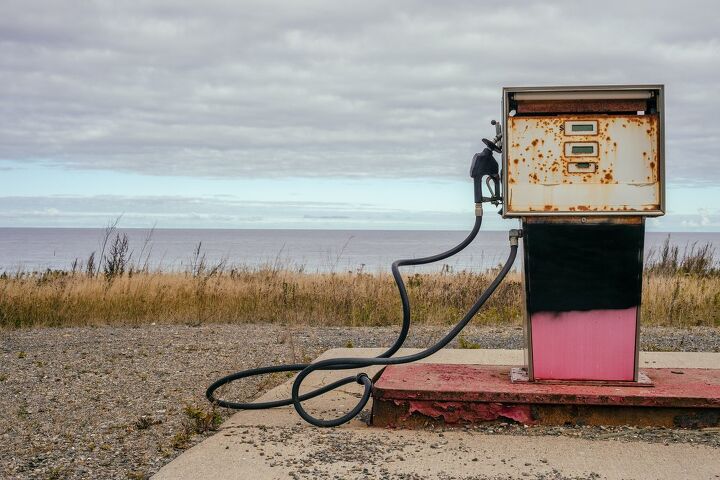GM Switches Sides in the Gas War, Joins California/Biden

General Motors has changed its mind on backing the Trump administration’s effort to supplant Obama-era emission regulations with something more manageable and prohibit California from setting its own emissions rules. Of course, the coastal rules aren’t really just for California — it desperately wants to export them to the rest of the country and has made rather incredible headway for not being the federal government. The coastal region has already convinced over 20 states to follow in its footsteps and even amassed support from auto manufacturers like BMW, Ford, Honda, and Volkswagen Group.
Other automakers, including General Motors, felt the Trump plan would give them more flexibility and undoubtedly make them less subject to government fines. However, with a Biden presidency assured without Trump and Co. having an extremely powerful voter fraud case, GM has become a turncoat. On Monday, CEO Mary Barra issued a letter to environmental groups stating that her company is “immediately withdrawing from the preemption litigation and inviting other automakers to join us.”
GM now wants to work with Joe Biden — probably because the company understands his administration is going to be regulating the snot out of the nation.
President Trump has repeatedly warned that such moves would give an advantage to China, which doesn’t have to make any changes under the Paris Agreement until 2030. He did so again at this week’s G-20 summit, stating that the U.S. was already making the most headway toward becoming carbon neutral of any nation. “[The Paris Climate Agreement is] not designed to save the environment,” he said. “It was designed to kill the American economy.”
Either way, Biden is taking an incredibly different approach and has seen corporate interests line up behind him in a manner Trump could only have dreamed of. Last week, GM even increased spending on EVs and autonomous vehicles by 35 percent from its previously announced plans. We’re guessing that had something to do with the media reporting that the Biden-Harris ticket would be cashed in for 2021.
According to Reuters, Barra said she believes “the ambitious electrification goals of the president-elect, California, and General Motors are aligned, to address climate change by drastically reducing automobile emissions.”
From Reuters:
Toyota said in a statement Monday that the company has “long supported year-over-year improvements in fuel economy standards” that provide climate and national energy security benefits but it had backed the Trump administration plan “knowing there was a preponderance of other automakers” aligned.
“Given the changing circumstances, we are assessing the situation, but remain committed to our goal of a consistent, unitary set of fuel economy standards applicable in all 50 states,” the company said.
While other automakers backing the Trump plan have remained silent so far, Democrat leadership and environmental activists had been howling that the United States must modernize to remain competitive. They claim the Trump rollbacks have no place in an America that’s striving to become more like its neighbors.
The Trump administration finalized a rollback of fuel efficiency standards in March, adding a concession increasing annual efficiency rates by 1.5 percent through 2026. But it’s far below the 5 percent yearly jumps the Obama administration rules mandated, even if experts have suggested such increases would be untenable. While we cannot say what’s to become of Trump’s fuel rules under a Biden presidency, we don’t foresee them lasting.
[Image: Marc Bruxelle/Shutterstock]

A staunch consumer advocate tracking industry trends and regulation. Before joining TTAC, Matt spent a decade working for marketing and research firms based in NYC. Clients included several of the world’s largest automakers, global tire brands, and aftermarket part suppliers. Dissatisfied with the corporate world and resentful of having to wear suits everyday, he pivoted to writing about cars. Since then, that man has become an ardent supporter of the right-to-repair movement, been interviewed on the auto industry by national radio broadcasts, driven more rental cars than anyone ever should, participated in amateur rallying events, and received the requisite minimum training as sanctioned by the SCCA. Handy with a wrench, Matt grew up surrounded by Detroit auto workers and managed to get a pizza delivery job before he was legally eligible. He later found himself driving box trucks through Manhattan, guaranteeing future sympathy for actual truckers. He continues to conduct research pertaining to the automotive sector as an independent contractor and has since moved back to his native Michigan, closer to where the cars are born. A contrarian, Matt claims to prefer understeer — stating that front and all-wheel drive vehicles cater best to his driving style.
More by Matt Posky
Latest Car Reviews
Read moreLatest Product Reviews
Read moreRecent Comments
- MaintenanceCosts "But your author does wonder what the maintenance routine is going to be like on an Italian-German supercar that plays host to a high-revving engine, battery pack, and several electric motors."Probably not much different from the maintenance routine of any other Italian-German supercar with a high-revving engine.
- 28-Cars-Later "The unions" need to not be the UAW and maybe there's a shot. Maybe.
- 2manyvettes I had a Cougar of similar vintage that I bought from my late mother in law. It did not suffer the issues mentioned in this article, but being a Minnesota car it did have some weird issues, like a rusted brake line.(!) I do not remember the mileage of the vehicle, but it left my driveway when the transmission started making unwelcome noises. I traded it for a much newer Ford Fusion that served my daughter well until she finished college.
- TheEndlessEnigma Couple of questions: 1) who will be the service partner for these when Rivian goes Tits Up? 2) What happens with software/operating system support when Rivia goes Tits Up? 3) What happens to the lease when Rivian goes Tits up?
- Richard I loved these cars, I was blessed to own three. My first a red beauty 86. My second was an 87, 2+2, with digital everything. My third an 87, it had been ridden pretty hard when I got it but it served me well for several years. The first two I loved so much. Unfortunately they had fuel injection issue causing them to basically burst into flames. My son was with me at 10 years old when first one went up. I'm holding no grudges. Nissan gave me 1600$ for first one after jumping thru hoops for 3 years. I didn't bother trying with the second. Just wondering if anyone else had similar experience. I still love those cars.


































Comments
Join the conversation
Volkswagen uses dual port and direct injection In the European market to comply with their greater participant requirements. I realize Toyota also incorporates this in their US models but more manufactures probably would do this if arson requirements for tighter. Makes for a cleaner engine as well as more power output.
Speaking of howling and snot...Posky, if you want to get hysterical about politics, write for a political blog. Or maybe Tim could set and enforce some quality standards. Bueller--I mean, Healy? Healy? Every time I come back here lately, I'm reminded why it's been longer and longer since the visit before.